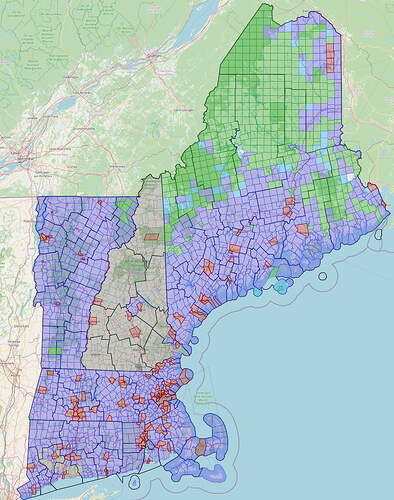I’ve finished adding appropriate border_type values to all Vermont Towns and made this Overpass visualization showing the different types across New England.
Link to query: overpass turbo
Blue is (incorporated) towns and red is cities. Green is unorganized towns, townships, & gores. Grey is boundaries not yet tagged with border_type. Teal is plantations, but since these are currently tagged border_type=township I’ve just matched names ending in “Plantation”. This may not be all of them. I think it makes sense to change these to border_type=plantation.
I’m planning to add border_type across New Hampshire next, but I’m not sure how specific to get with values for the unorganized areas. They go by several different names (township, grant, purchase, location), but I don’t know if it really makes sense to have four different values for these relatively obscure, unorganized administrative areas. Similarly, it may not really make sense to differentiate between gores and unorganized towns in Vermont. As far as I can tell they are functionally the same, and “gore” is just a reminder of how they came to be. What do you all think about using the same border_type value for all of these unorganized administrative areas across VT, NH, and ME? “Unorganized township” seems a reasonable descriptor whether a particular area is called a township, unorganized town, gore, grant, purchase, or location.
